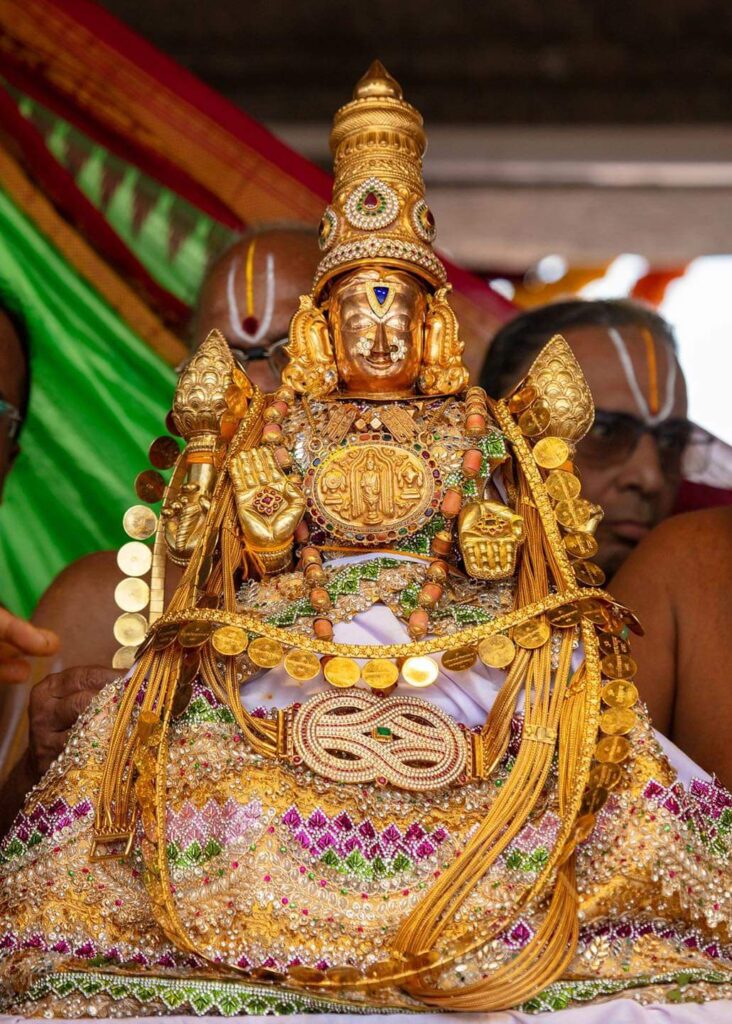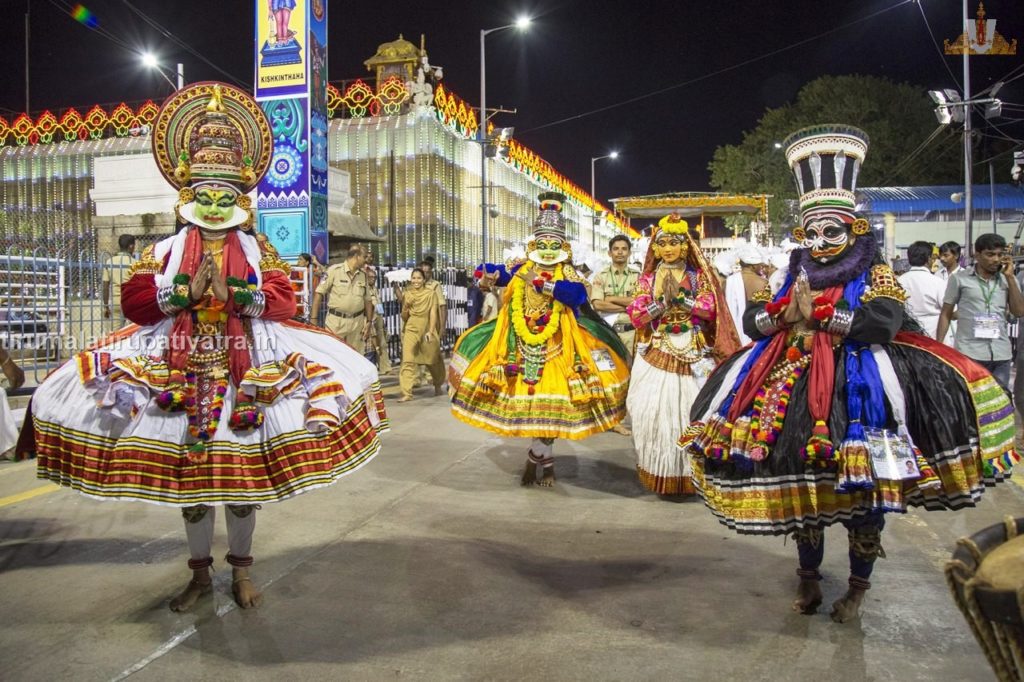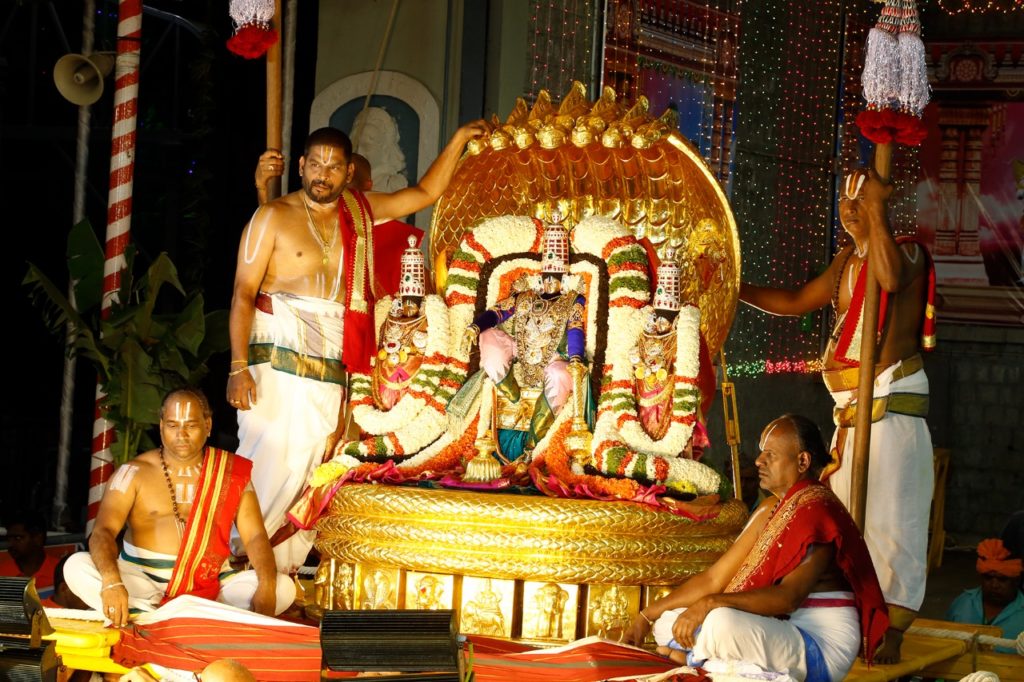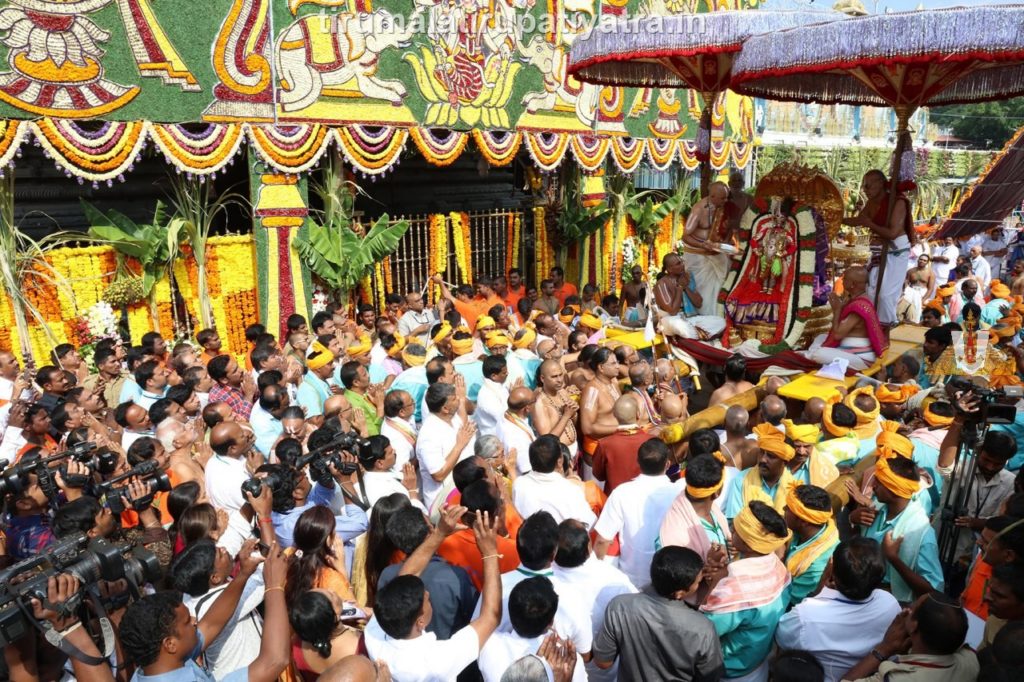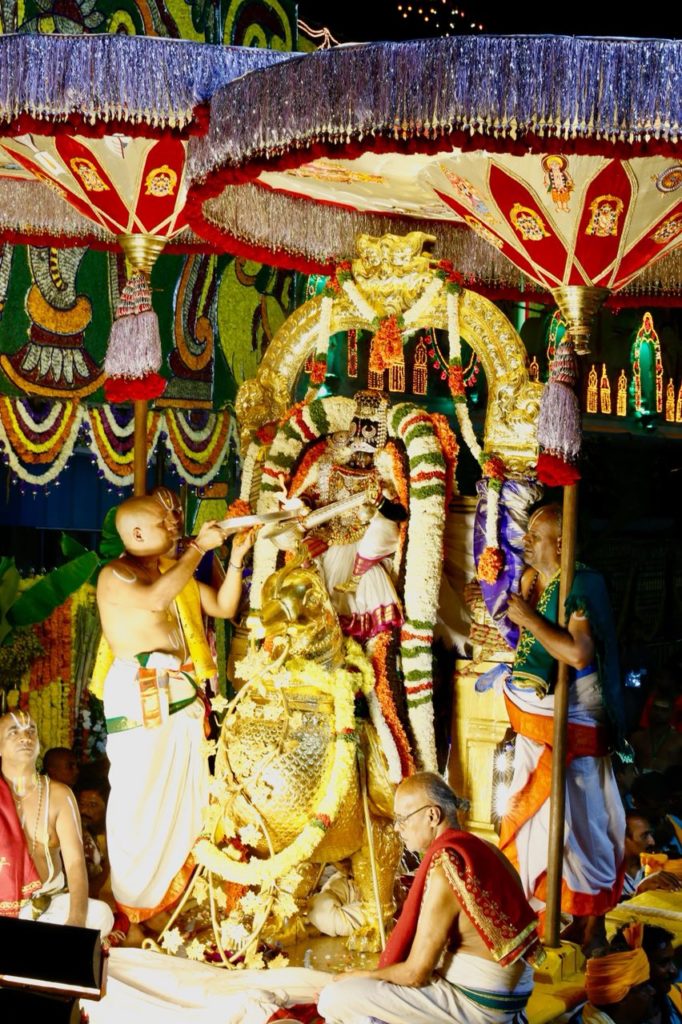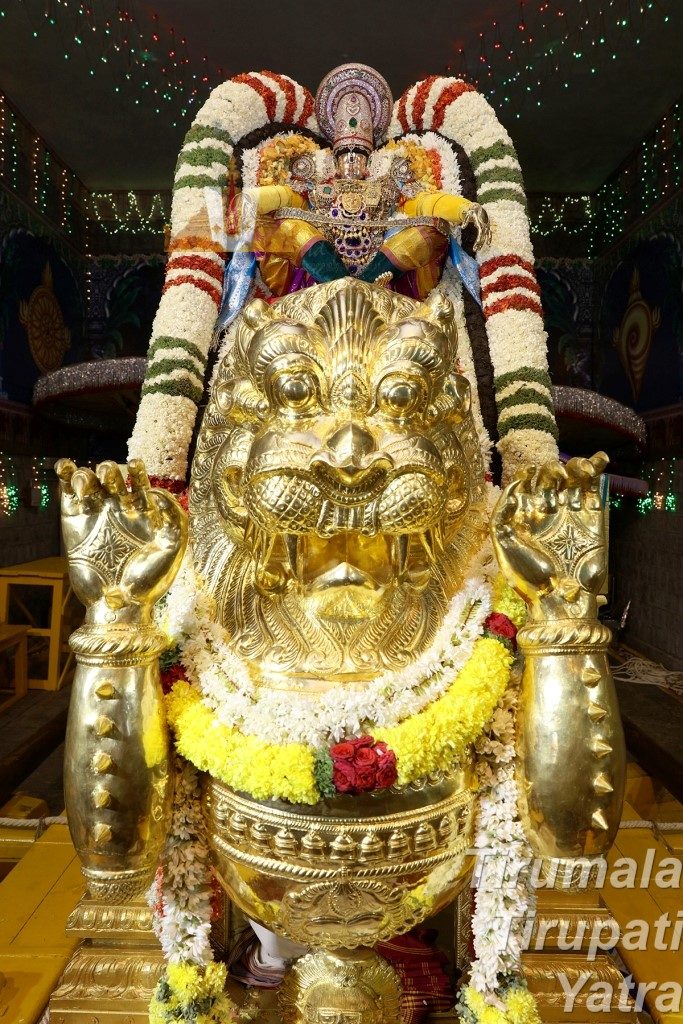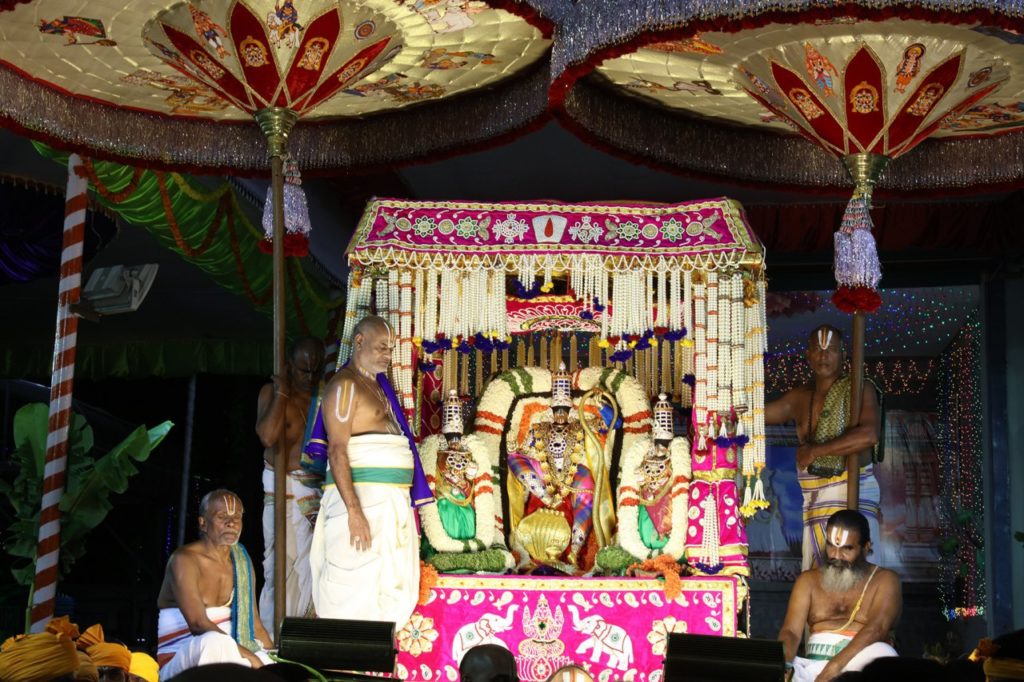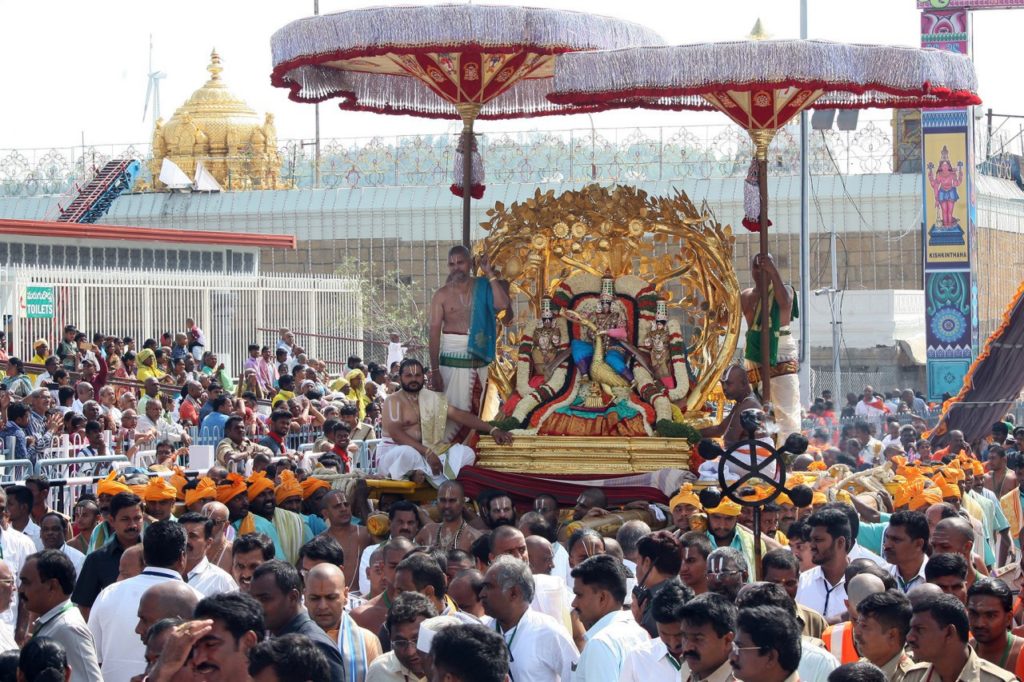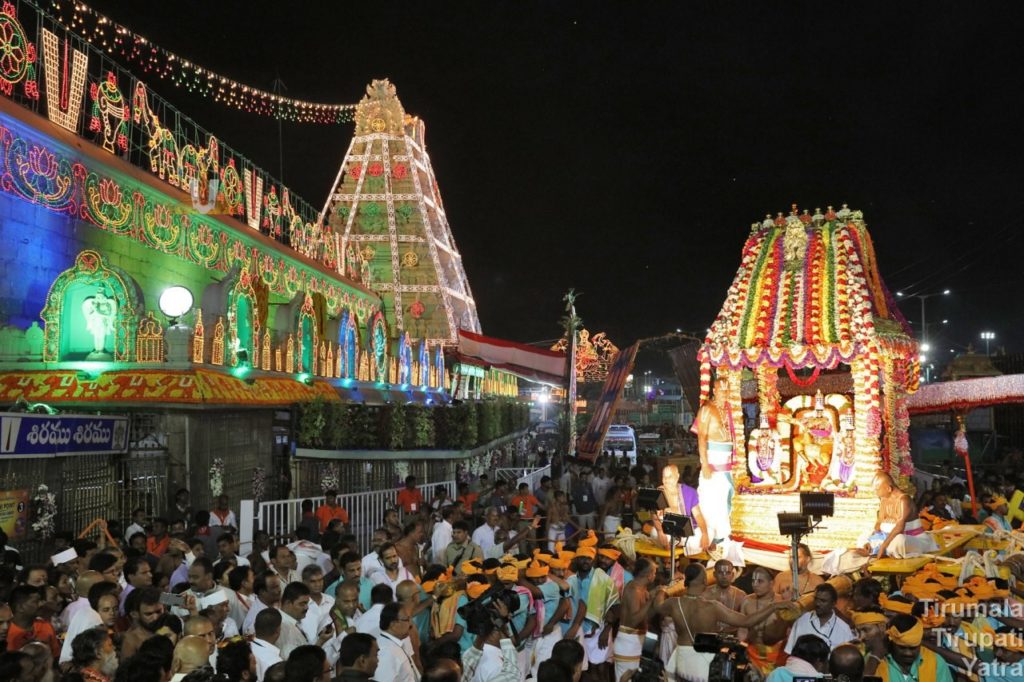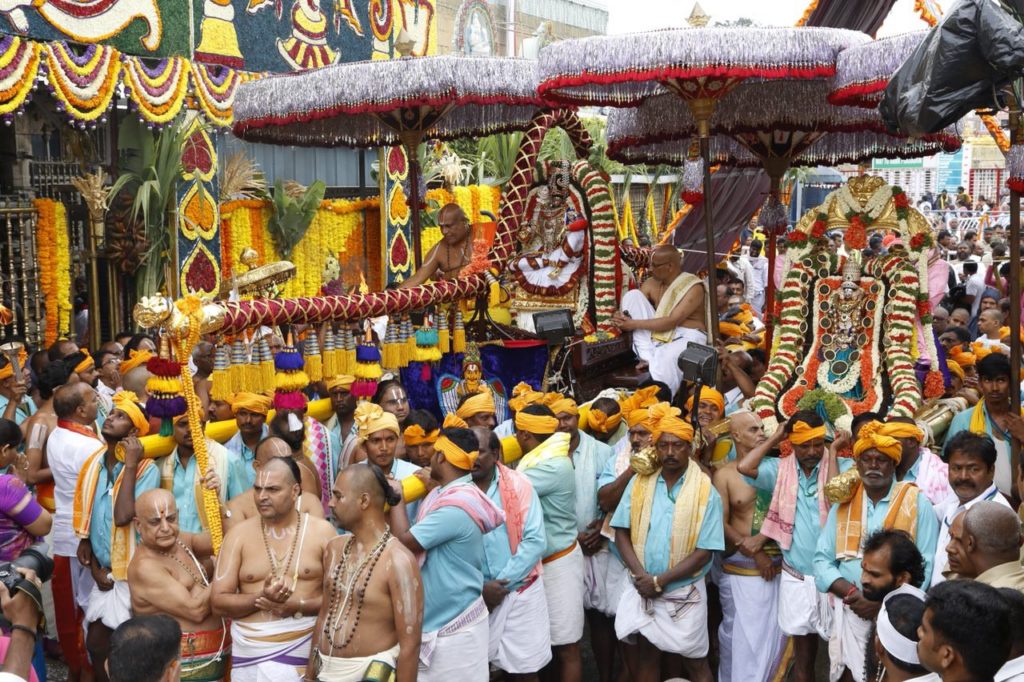The Glory of the DIVINE MOTHER Sriman Narayana, the Almighty manifests Himself in five distinct forms namely the Param, Vyuham, Vibhavam, Antaryami and Archa. In all these forms the Lord is always inseparably united with His divine consort Sri Mahalakshmi. The Parabrahamam is identified only by the presence of the “Sri”, the Divine Mother. The Read More
Tag: Brahmotsavam
Although many utsavas are conducted for the Lord throughout the year, the Brahmotsavams which take place for nine days a year assume greatest prominence in the history of Tirumala.
Cultural and Folk Arts – Brahmotsavams
Brahmotsavam – A Festival organized by Brahma According to some of the Epic Sources, it is on the day of Lord Sri Venkateswara’s Self Manifestation on the Tirumala Hills that his son BRAHMA was called by HIM and asked to celebrate a festival in memory of His Manifestation Day. Ever since this festival has been Read More
Pedda Sesha Vahana Seva 2018
There is one ceremony or the other almost daily for Lord Venkateswara manifest on Tirumala. Different ceremonies are conducted on a grand scale for the Lord with different time frames— daily, fortnightly, monthly and yearly. Of them, special mention may be made of annual Brahmotsavas. Devotees go on raptures witnessing the Lord on different carriages Read More
Chinna Sesha Vahana Seva 2018
There is one ceremony or the other almost daily for Lord Venkateswara manifest on Tirumala. Different ceremonies are conducted on a grand scale for the Lord with different time frames— daily, fortnightly, monthly and yearly. Of them, special mention may be made of annual Brahmotsavas. Devotees go on raptures witnessing the Lord on different carriages Read More
Hamsa Vahana Seva 2018
There is one ceremony or the other almost daily for Lord Venkateswara manifest on Tirumala. Different ceremonies are conducted on a grand scale for the Lord with different time frames— daily, fortnightly, monthly and yearly. Of them, special mention may be made of annual Brahmotsavas. Devotees go on raptures witnessing the Lord on different carriages Read More
Simha Vahana Seva 2018
There is one ceremony or the other almost daily for Lord Venkateswara manifest on Tirumala. Different ceremonies are conducted on a grand scale for the Lord with different time frames— daily, fortnightly, monthly and yearly. Of them, special mention may be made of annual Brahmotsavas. Devotees go on raptures witnessing the Lord on different carriages Read More
Muthyapu Pandiri Vahana Seva 2018
Muthyapu Pandiri Vahana Seva There is one ceremony or the other almost daily for Lord Venkateswara manifest on Tirumala. Different ceremonies are conducted on a grand scale for the Lord with different time frames— daily, fortnightly, monthly and yearly. Of them, special mention may be made of annual Brahmotsavas. Devotees go on raptures witnessing the Read More
Kalpavriksha Vahana Seva 2018
There is one ceremony or the other almost daily for Lord Venkateswara manifest on Tirumala. Different ceremonies are conducted on a grand scale for the Lord with different time frames— daily, fortnightly, monthly, and yearly. Of them, special mention may be made of annual Brahmotsavas. Devotees go on raptures witnessing the Lord on different carriages Read More
Sarva Bhupala Vahana Seva 2018
There is one ceremony or the other almost daily for Lord Venkateswara manifest on Tirumala. Different ceremonies are conducted on a grand scale for the Lord with different time frames— daily, fortnightly, monthly, and yearly. Of them, special mention may be made of annual Brahmotsavas. Devotees go on raptures witnessing the Lord on different carriages Read More
Mohini Avatharam 2018
There is one ceremony or the other almost daily for Lord Venkateswara manifest on Tirumala. Different ceremonies are conducted on a grand scale for the Lord with different time frames— daily, fortnightly, monthly, and yearly. Of them, special mention may be made of annual Brahmotsavas. Devotees go on raptures witnessing the Lord on different carriages Read More
